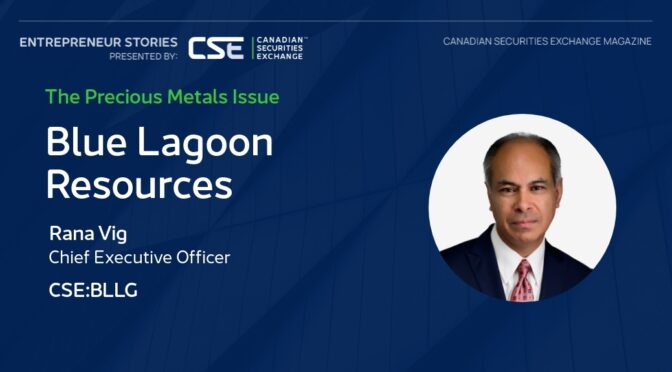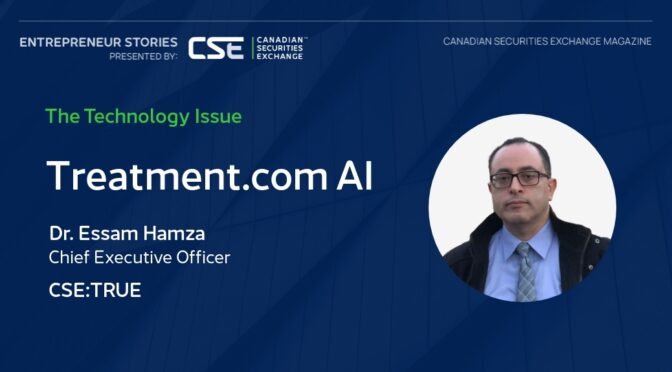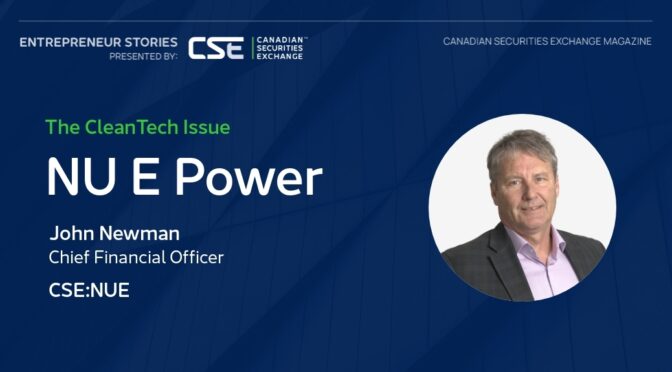Blue Lagoon Resources (CSE:BLLG; OTCQB:BLAGF) goes about its business a little differently than most junior mining companies, and this summer marked the culmination of its unwavering – and decidedly entrepreneurial – effort to develop a high-grade underground gold project in British Columbia.
The pending start of production at its Dome Mountain Project, where a ribbon-cutting ceremony was held on July 9, has been years in the making. Now, first ore as an operating mine is expected to be sent for milling no later than fall of this year.
That the company stands at the cusp of generating its first operating cash flow reflects a strategy that defies many mining conventions, and a management approach that is as much entrepreneurial as geological.
Blue Lagoon Chief Executive Officer Rana Vig founded the company in 2019 with no formal background in mining. “I’m not a geologist or mining engineer,” explains Vig. “I come from a business background and have founded five companies in different industries. I surround myself with smart people in whatever industry I’m in and focus on execution.”
That mindset, plus his first steps in the mining sector as a shareholder and director at Continental Precious Minerals and Musgrove Minerals in the early 2010s, shaped Blue Lagoon’s decisions at almost every stage. From the choice of project to the route to cash flow, Vig has chosen a path that prioritizes capital efficiency and control, even if it came at the expense of speed or mainstream institutional interest.
Securing a mining licence in British Columbia is a big achievement in itself, says Vig. Indeed, Blue Lagoon is one of only nine companies to have received a green light in the past 10 years.
Dome Mountain, located just an hour outside the mining hub of Smithers in northwestern B.C., has exceptional qualities that make up for the relatively small size of its initial scope.
For one, the property is accessible by road year-round. Second, while Blue Lagoon’s current production plan is based on a single high-grade vein system named Boulder, which is comprised of three veins, the total number of high-grade veins identified on the property to date is 15. Despite Blue Lagoon having conducted over 50,000 metres of drilling, just 10% of the 22,000-hectare property has been explored.
Dome Mountain has 218,000 ounces of gold in the Measured and Indicated category. The initial rate of recovery is modelled at 15,000 ounces of gold per year, with Vig noting that plans call for increasing this to 20,000 ounces in the second year and beyond.
Those numbers might not be huge by industry standards, but the average grade certainly is, at approximately 9 grams per tonne gold equivalent. And as everyone in mining knows, grade is king.
By sending ore to a toll mill off-site, the need for a tailings pond is removed, thus reducing environmental risk and many related permitting issues. That decision helped Blue Lagoon build trust with local First Nations communities, which was essential to securing the permit.
This approach also means that Blue Lagoon does not need to publish a feasibility or prefeasibility study, a move that breaks with mining industry convention.
“You can’t publish cost details unless you’ve done a study,” says Vig. “But we didn’t feel we needed one. Two and a half years ago, we extracted 5,000 tonnes and sent it for toll milling. That gave us real-world operating and cost data.”
For some institutional investors, the absence of a feasibility study may have been a stumbling block. But Vig is unbowed. “Most investors understand the risks. The rock is high-grade, gold prices are high, and people have done their due diligence,” he says. “Unless we thought we could be profitable, we wouldn’t do it.” Blue Lagoon has been one of the best-performing stocks on the CSE in 2025, while also enjoying a place in the CSE25 Index.
Blue Lagoon’s focus on capital discipline dates back to the company’s early days. The market was not particularly receptive to exploration stories at the time and Vig resisted pressure from his technical team to raise more funds. “The market was weak and raising at those levels would have been too dilutive,” he says. “The gold wasn’t going anywhere. I said, let’s focus on getting the permit. Once we’ve got cash flowing, we’ll reinvest to expand the resource.”
It was a business decision rooted in experience. “Geologists often fall in love with a project. I focus on profitability and cash flow.”
That reinvestment phase is poised to begin soon. With first production imminent, Blue Lagoon plans to use initial revenues to fund infill and exploration drilling. “Less than 10% of the property is explored and all of that historical drilling plus the 50,000 metres that we drilled has generated many compelling targets we want to follow up on,” Vig explains.
The company’s recent financing of nearly $5 million, all from existing shareholders and strategic investors, will help smooth the ramp-up in exploration work. The strategic investors include Crescat Capital, a U.S. precious metals fund, and Nicola Mining, the company’s toll milling partner, which also extended a $2 million unsecured line of credit. “Nicola’s president has personally invested in our last three financings. That gives me confidence that we have something special,” Vig says.
A new technical team is also in place, with simple site access making hiring easier. Michael McCardal, a senior underground geologist with experience at Pure Gold Mining and Kirkland Lake Gold, recently joined the company. Earlier this year, Vig also formed a mining committee to guide the transition to production, chaired by former BHP executive Yannis Tsitos and including a local underground mining contractor who has been working on and off on the project since the 1990s.
With the ribbon-cutting ceremony now complete and commissioning underway, the focus shifts to ramp-up. The first 60 to 90 days will be devoted to underground pre-development work to establish multiple mining faces. Steady production is expected by November, focused on the 15,000-ounce target for recovery in the first full year.
Still, risks remain. While operating without a feasibility study adds uncertainty, Blue Lagoon’s agile approach positions it to move quickly toward production and cash flow in a strong gold market. The company is transparent about the risks, and its ability to scale output and grow its resource base will be key to capturing long-term interest and value.
Vig is certainly confident. For him, the fundamentals are sound, the infrastructure is in place, and the timing is right.
“At these high gold prices and our grade, it’s kind of a no-brainer,” says Vig. “This year, we are really just beginning to lay the foundation to the start of something really special.”
This story was featured in Canadian Securities Exchange Magazine.
Learn more about Blue Lagoon Resources at https://bluelagoonresources.com/.




